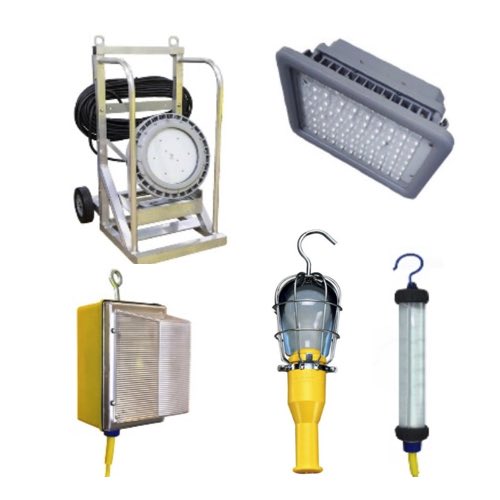Industrial Lighting

RSP Supply carries a comprehensive range of industrial lighting solutions designed for durability, energy efficiency, and superior visibility. Whether you’re lighting a warehouse, factory floor, or outdoor facility, our LED lighting fixtures, high bay lights, and area luminaires provide dependable, long-lasting illumination that enhances both safety and productivity.
Modern industrial LED lighting offers significant energy savings compared to traditional lighting systems while delivering brighter, more uniform light. Built with rugged housings and impact-resistant lenses, our lighting products are engineered to withstand dust, moisture, vibration, and extreme temperatures.
From heavy-duty task lights to large-scale high bay systems, RSP Supply has solutions that meet your illumination requirements while helping you reduce energy costs and maintenance. Choose lighting designed to improve visibility, prevent workplace accidents, and maintain optimal efficiency across your entire operation.
More Information about Industrial Lighting
If you head to an industrial warehouse, factory, or some other sizable open space, there's a good chance you will encounter high bay lighting. That's because high bay lighting is specifically designed to illuminate large areas—kind of like a giant flashlight, but with a lot more lumens. Of course, what makes high bay lighting such a good fit for these sorts of applications isn't just how far it can throw light; it's also that it can do so while using energy efficiently and at an affordable price. High bay lights come in different styles—traditional, modern, minimalist—that ensure they can fit comfortably into the overall design scheme of whatever space they're installed in and that they can achieve the look and the light without being the sort of "eyesore" that some industrial fixtures tend to resemble.
FAQs
Q: What types of industrial lighting does RSP Supply offer?
We offer LED fixtures, high bay lights, task lights, wall-mounted lights, and outdoor lighting designed for warehouses, manufacturing plants, and commercial spaces.
Q: Why choose LED lighting for industrial environments?
LED lighting consumes less energy, lasts longer, and produces brighter, more consistent illumination than traditional lighting systems, reducing long-term maintenance costs.
Q: Are high bay lights suitable for large facilities?
Yes. High bay lights are ideal for warehouses, factories, and gymnasiums, providing powerful illumination for ceilings 20 feet or higher.
Q: Can industrial LED fixtures be used outdoors?
Absolutely. Many of our fixtures are weather-resistant and IP-rated, making them suitable for outdoor, wet, or hazardous environments.
Q: What are the benefits of industrial lighting for workplace safety?
Proper industrial lighting reduces shadows and glare, improving visibility and reducing accidents, especially in areas with machinery and moving equipment.
Why Buy from RSP Supply
At RSP Supply, we provide energy-efficient industrial lighting designed to meet the demands of heavy-duty environments. Our partnerships with leading manufacturers ensure you receive high-quality, long-lasting LED solutions that improve safety, reduce energy use, and minimize downtime.
We offer fast shipping, expert guidance, and a full catalog of lighting systems for every industrial application - making RSP Supply your trusted source for illumination that works as hard as you do.

